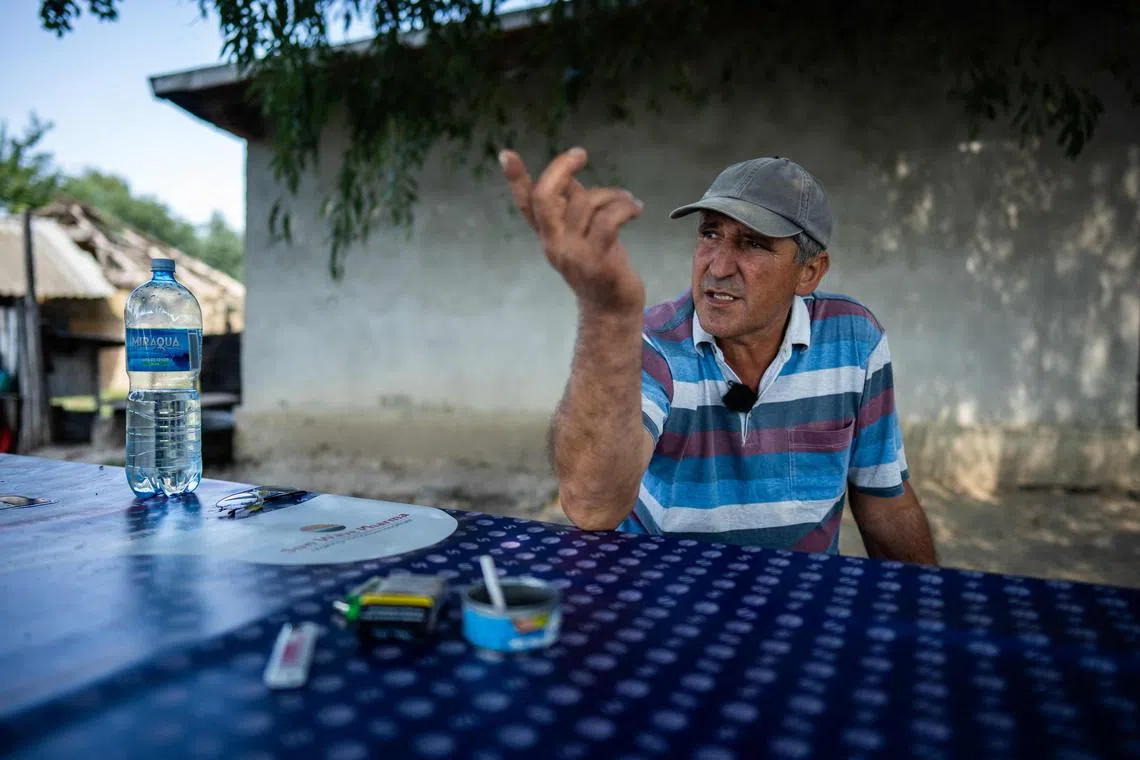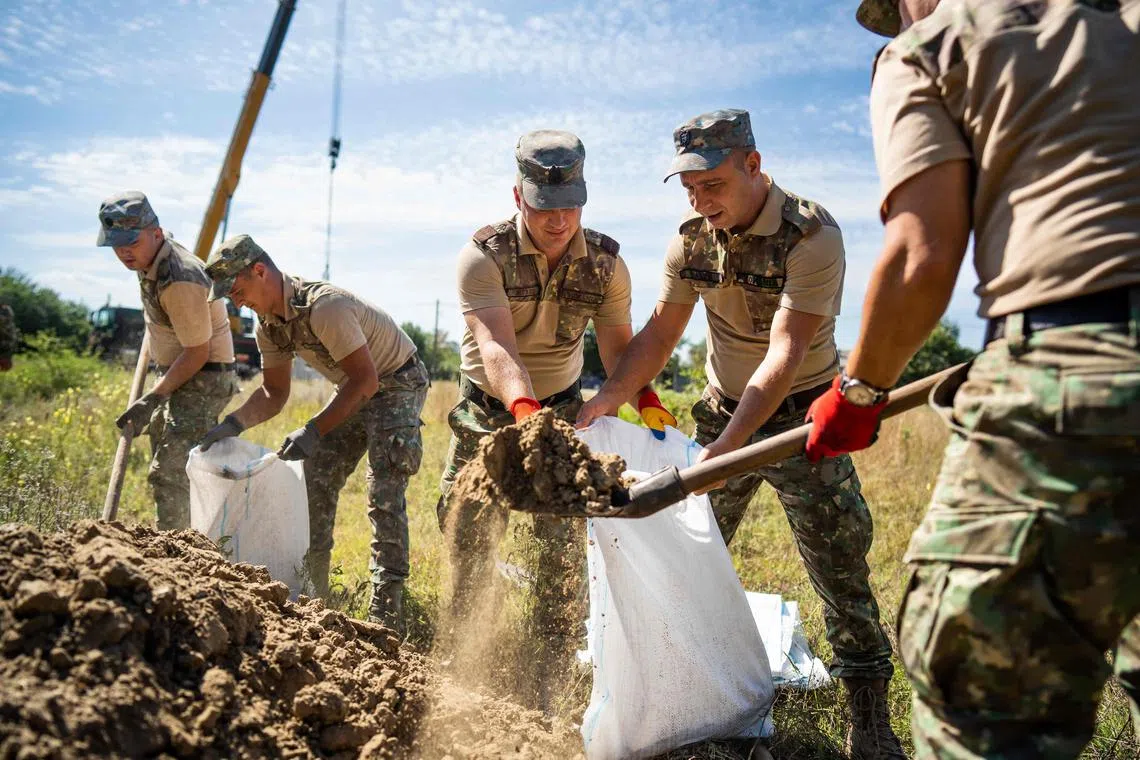Sound of sirens: Romanian villagers fear war spilling over from Ukraine
Sign up now: Get ST's newsletters delivered to your inbox

Mr Costica Tanase, a 51-year-old farmer, and his family have nearly grown used to the blaring sounds of war from across the border in Ukraine.
PHOTO: AFP
Follow topic:
PLAURU, Romania – It was 2am when Mr Costica Tanase yet again awoke to the sound of sirens in the remote Romanian village of Plauru.
Russian drones were pounding the Ukrainian port just over the border.
“When the sirens wail at night, that’s when you should expect the drones to come,” said Mr Tanase, exhausted.
The border village faces Izmail just across the Danube, and drones can be often heard flying over Romanian territory.
Since exiting a deal allowing safe grain shipments via the Black Sea,
Fresh drone debris was discovered on Wednesday, after Romanian soldiers found fragments of a drone
One of them left a gaping hole in the ground after burning several trees, AFP journalists observed at the scene.
Louder than a plane
Mr Tanase, a 51-year-old farmer, and his family have nearly grown used to the blaring sounds of war that continue to rob them of their sleep.
So have the other 40 residents of Plauru – but most of them are reluctant to abandon their homes, or their livestock.
In constant fear of a drone hitting his house, Mr Tanase said that the Romanian soldiers who were recently deployed to the area did little to make him feel safer.
“What can they do? They don’t have an air-defence system,” he said.
“The sound (of drones) is louder than a plane,” said 72-year-old resident Ion Giuvanovici, who went looking for debris after he saw one explode nearby.
If things get worse, 70-year-old Mr Gheorghe Puflea might pack up and leave, together with his two horses, cows and hens.
“It shakes like an earthquake” when a drone approaches, and his farm animals start stressing.
“The calf hid between my legs, scared to death.”

Mr Gheorghe Puflea, 70, is considering leaving his home in Plauru, Romania.
PHOTO: AFP
Soon the residents will be able to take refuge in two concrete air-raid shelters, hastily built by the military
Really in danger
At the weekend, Bucharest condemned the “violation of (its) airspace” and called on Russia to refrain from actions that could threaten the “safety and security” of Romanians.
Romanian President Klaus Iohannis and Nato chief Jens Stoltenberg also discussed the drone fragment discovery.
Mr Stoltenberg wrote on X (formerly Twitter) that there was “no indication of intent to hit Nato, but the strikes are destabilising”.
For several days, Romania had rejected claims by Kyiv that Iranian-made Russian drones fell and detonated on its soil.
Ukrainian Foreign Minister Dmytro Kuleba criticised its Nato neighbour for playing down events to avoid being drawn into a direct conflict.

Romanian soldiers build a bomb shelter as a safeguard for villagers in Plauru, Romania.
PHOTO: AFP
The mayor of Plauru, Mr Tudor Cernega, claimed to have found the first drone fragments – and alerted the authorities – after scouring certain areas identified by Internet users.
“Something like this (is not) in the mayor’s manual,” he said.
But the recent problems have also had positive effects on the isolated region, grappling with dilapidated roads and volatile internet connection, Mr Cernega added.
While many residents still feel neglected by the government, he tries to look on the bright side in an effort to make the most of the spotlight.
It was fortunate that the real drone fragments were found, said Mr Cernega, as until then, nobody had believed the residents.
“It turned out that we are really in danger,” he said. AFP

